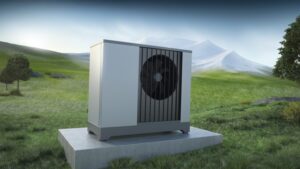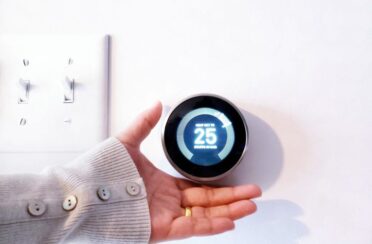 The cooling ability of your air conditioner has definite limits, as most people discover when a real scorching heat wave strikes. An AC doesn’t actually make coolness; it moves heat. Cooling performance and air-conditioner efficiency are directly related to the intensity of heat outside. As indoor heat is extracted by frigid refrigerant vapor passing through the indoor AC evaporator coil, then dispersed by the condenser coil outdoors, cool comfort is the natural result.
The cooling ability of your air conditioner has definite limits, as most people discover when a real scorching heat wave strikes. An AC doesn’t actually make coolness; it moves heat. Cooling performance and air-conditioner efficiency are directly related to the intensity of heat outside. As indoor heat is extracted by frigid refrigerant vapor passing through the indoor AC evaporator coil, then dispersed by the condenser coil outdoors, cool comfort is the natural result.
Heat Is On the Move
Outdoor heat wants to come indoors. Heat energy naturally flows from a hotter zone into a cooler zone. Therefore, as the outdoor temperature climbs on a summer day, heat continuously infiltrates the house unless it is kept out. Here are some ways heat manages to enter the house and impact the cooling performance of your AC:
- Air infiltration. Air leaks in the structure of the house allow outside air to seep into the indoor environment, bringing heat energy with it.
- Solar radiation. Solar energy from the sun radiates through building materials such as roofing and siding, adding additional heat to the inside of the home.
- Windows. Heat energy in the form of light streaming through windows also heats the interior of the house and competes with your AC.
Coolness Has Its Limits
Another factor affecting indoor comfort is the simple fact that an air conditioner can only extract a fixed, limited amount of heat at any given time. If temperatures soar on a summer day, the indoor temperature can generally not be more than 20 degrees below the outdoor level — no matter how low the AC thermostat setting may be nor how long the unit runs.
Unrealistically low thermostat settings on a very hot day will only dramatically increase electricity consumption and costs—as well as inflicting excess AC wear and tear—while not providing additional coolness.
For more info about factors affecting the cooling ability of your central AC, contact the professionals at Arpi’s Industries.


